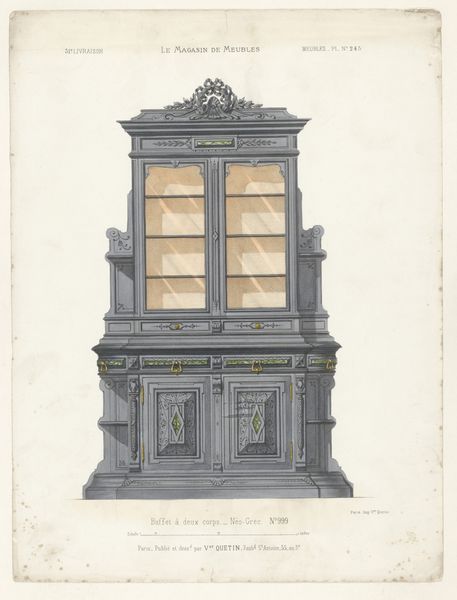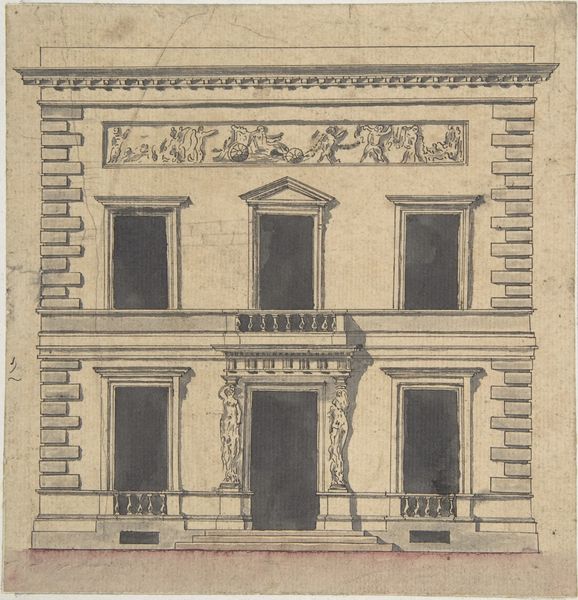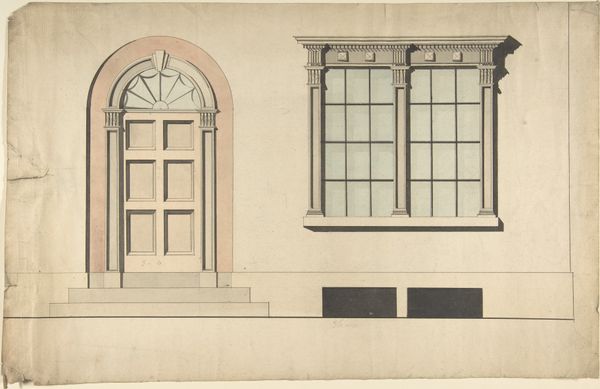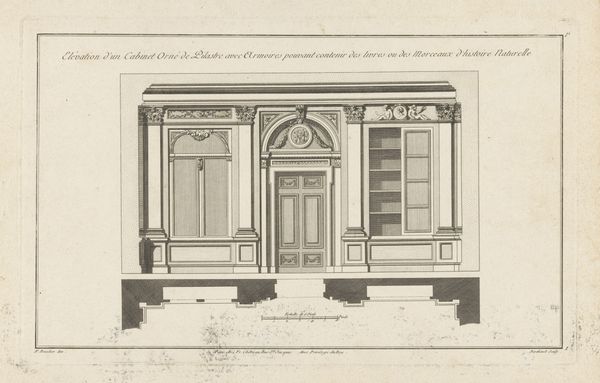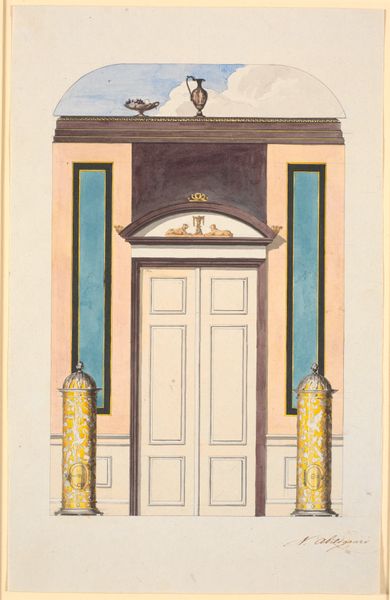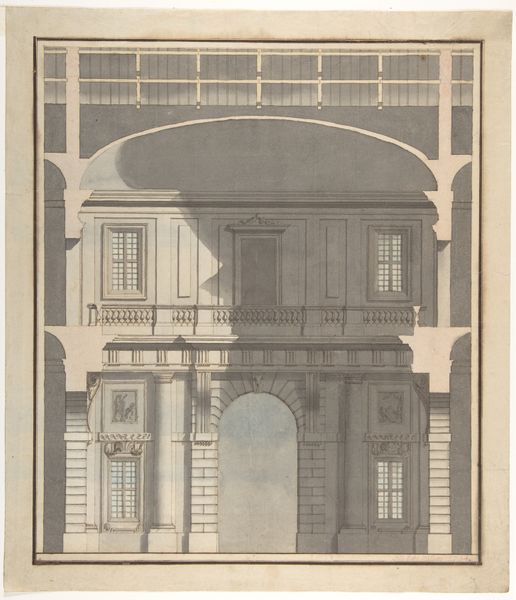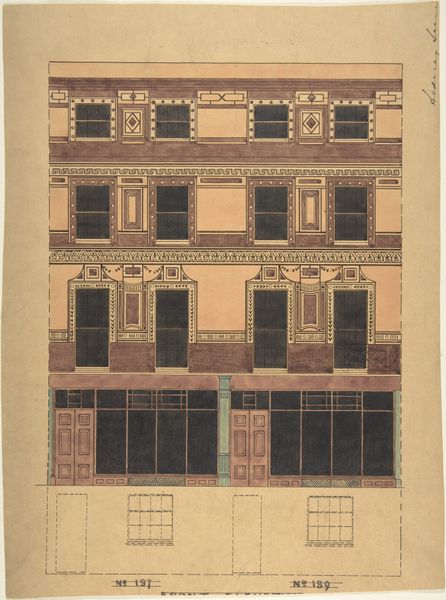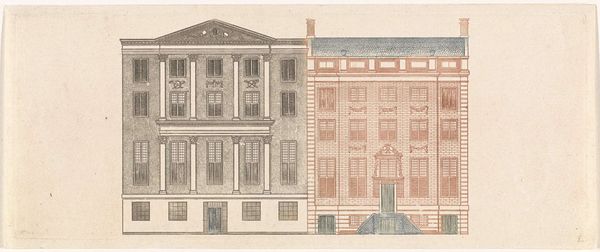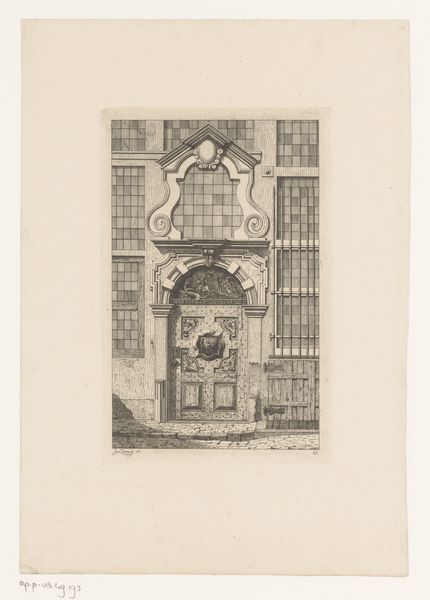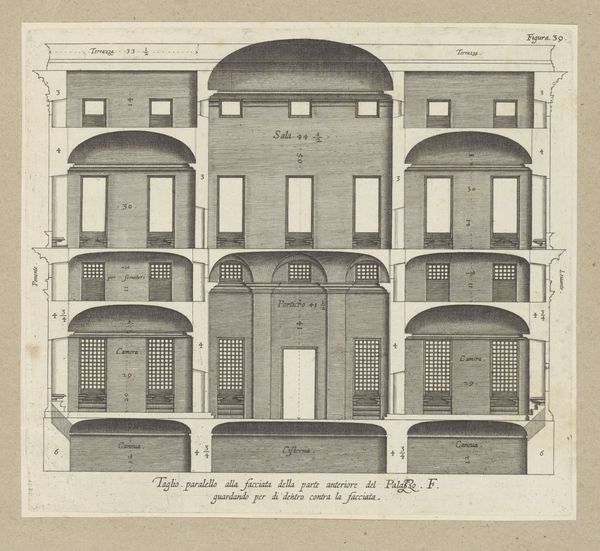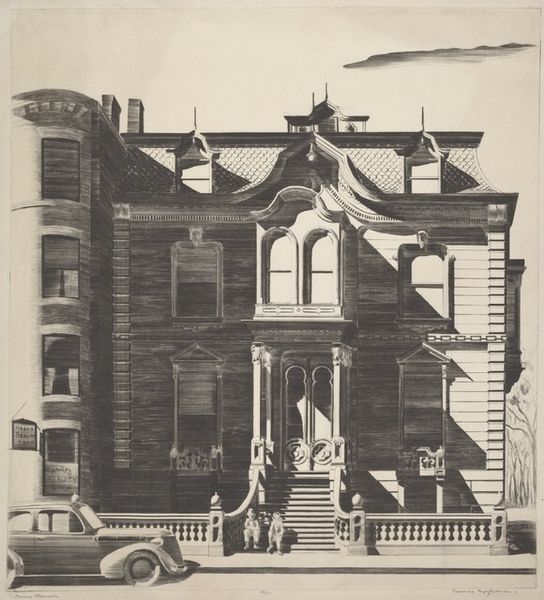
drawing, watercolor
#
drawing
#
watercolor
#
cityscape
#
watercolor
#
realism
Dimensions: overall: 90.5 x 68.9 cm (35 5/8 x 27 1/8 in.)
Copyright: National Gallery of Art: CC0 1.0
Editor: This is “Entrance to Cutting House,” a watercolor and drawing from around 1938. The muted colors give it an almost dreamlike quality. I'm curious, what's your take on this particular piece? Curator: What interests me most is how Rothkranz documents not just the facade but the very labor and materials that constitute this cityscape. The red brick, for instance. Each brick, individually manufactured, stacked, and mortared. Look closely – it's a record of industrial and manual labor, of urban growth driven by material production and consumption. Editor: So, you're less interested in the architectural style and more in the…making of it? Curator: Precisely. Consider the railings, the doorway, even the window curtain. These are all manufactured items, accessible perhaps to a specific economic class at the time. This isn't just an entrance; it's a portal reflecting social stratification and the products defining that society. Editor: That’s interesting. I never really thought about it in terms of the economic context surrounding building materials and manufacturing. I was focusing on the surface. Curator: Surface matters, but the materialist approach pushes us to see beyond aesthetics. What kind of resources were necessary? What labor was involved? What were the conditions of that labor? These questions enrich our understanding of the artwork and its place in the world. The accessibility to raw materials needed in each manufacturing process also must be examined as well as where those raw materials originated from. Editor: That's really broadened my perspective. It’s not just about what's depicted, but how it was made and what it represents about the time and society that created it. Thank you for your insight! Curator: Indeed. By looking at art through the lens of material and production, we see beyond the pretty picture and dive into the social, economic, and labor systems that shaped it.
Comments
No comments
Be the first to comment and join the conversation on the ultimate creative platform.

